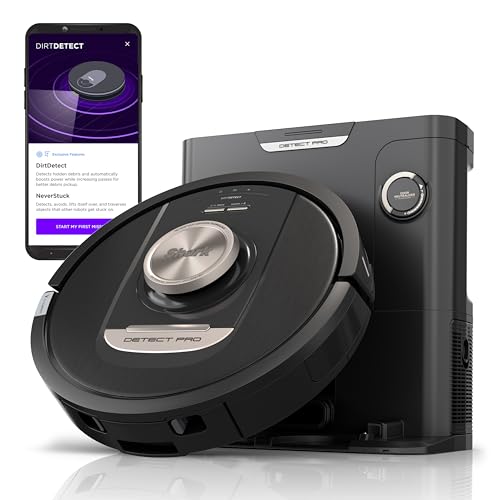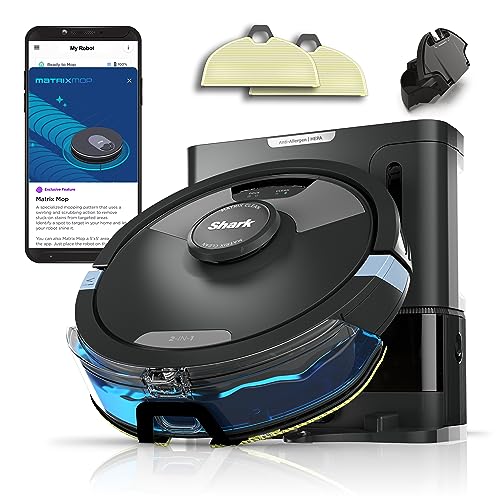A Comprehensive Guide To Bagless Autonomous Vacuums From Beginning To …
페이지 정보

본문
 Bagless Autonomous Vacuums
Bagless Autonomous Vacuums Robotic vacuums suck up dust, surface dirt, pet hair and more, ensuring your floors are clean so that you can concentrate on the things that matter to you. They can also charge and dock at a time, either via remote control or on a timer.
Robotic vacuums suck up dust, surface dirt, pet hair and more, ensuring your floors are clean so that you can concentrate on the things that matter to you. They can also charge and dock at a time, either via remote control or on a timer.The choice between bagged and bagless robot navigator models is based on your lifestyle, budget and priorities. This guide will help you determine which model is best for your home.
Easy to empty
Bagless vacuum cleaners are much easier to empty and do not require bags. They also require less maintenance and are quieter than traditional models, which often come with a noisy filter. Some models include a dustbin which can be easily cleaned and taken away. Some are also equipped with a water tank which can be used for mopping floors and cleaning up stubborn spills and stains. These robots are more versatile because they can empty their water tanks after every cleaning session, or when the tanks overflow.
Most robotic cleaners come with large charging bases that can be placed on the floor of your home to allow you to complete other tasks while it's working. Some can self-empty, which means that they dump debris from their dustbin into a container outside when they return to the dock for recharge. This gives them an advantage over other robots which need to be manually empty each time they are used.
Apart from getting rid of debris bagless autonomous vacuums can also assist in keeping your home clean by sucking up dirt pet hair, lint, and other allergens on a regular basis. They can access areas that are not accessible to conventional vacuum cleaners, and can even fit under furniture where dirt bunnies can hide.
In terms of function they are a great addition to any home. They are especially useful in keeping floors clean. They can collect dust and crumbs on hard surfaces. They're usually equipped with a washable and removable filter, typically HEPA. This is perfect for those suffering from breathing problems or allergies.
However, if you've got walls-to-wall carpeting or a home filled with furniture, a robot vacuum might not be the right choice for your space. A traditional vacuum is an ideal choice as it has more power and can handle ground-in dirt that's been lying around for longer. You could also use a robot vacuum in conjunction with an ordinary one. This means that you can utilize the robot vacuum to tackle the most difficult messes and the regular one to tackle the normal stuff.
Cleansing is more easily
A bagless robot navigator robot vacuum can be more efficient than a bagged one, because it doesn't require the time-consuming task of removing dust clumps from its dust bin. This can be messy, and it also releases dust into the air, which can cause allergic reactions. Self-emptying models do not require users to touch dirt as they will automatically empty themselves into the bin. The base only needs to be replaced every 60 days.
Bagless models also tend to be quieter than bagged counterparts, meaning they are less disruptive to the family. Some models have a hush mode which greatly reduces the noise generated during the vacuuming process. Some vacuum cleaners are controlled remotely using an app, or voice assistants like Amazon Alexa or Google Assistant. This lets users schedule cleaning sessions or change settings while on the move.
Many robotic vacuums can be upgraded to include additional features like HEPA filters and mopping capability. These features can enhance the performance of the vacuum and increase the number of surfaces it is capable of cleaning. Some of them can be used to make voice and video calls, or as a surveillance camera.
When selecting a robot vacuum, look for models with a large dust bin and long battery life. The best Bagless robot Vacuum models include charging docks which can stop a vacuuming session and recharge, and resume where it left off once the charge is complete. You should consider a model that comes with the use of a rubber brush instead of bristle rollers to reduce pet hair.
Choose a model that features a smart mapping function to ensure thorough cleaning. The machine will map the space it has cleaned once and will run along that route each time unless there is an obstruction. This will keep the vacuum cleaner from straying from its intended path and wasting time, which can happen with cheaper vacuum cleaners, such as our budget choice.
Easy to maintain
Bagless vacuums are easier to maintain than their bagged counterparts, because emptying the trash bins is easy. Simply remove the bin and empty it into a trash can and then attach it back to the unit. This eliminates an unnecessary interruption in the cleaning process and allows you to work without stopping. This also reduces the amount of bags you'll need to purchase over time.
Another benefit of bagless suction robots models is that it doesn't cease to function when the bin becomes overflowing like a bagged vacuum does. This allows you to keep cleaning and to get more efficient results without having the bin empty.
Many robots with a base without a bag have the ability to empty themselves. They can then return to their base and automatically dump their contents into the trash. This is a huge benefit for facility managers who wish to cut down on the amount of manual work their staff must do.
The top robotic vacuums that remove pet hair are equipped with advanced navigation systems and obstacle detection systems which allow the vacuums to avoid obstacles like small animals or children. Many models use lasers and cameras to map the area and plan the most efficient route each time. This can result in consistent, thorough cleaning and help you to meet health and safety standards in your facility.
Robotic vacuums aren't a great solution for heavily soiled or cluttered spaces, but they can make an excellent supplement to your cleaning program. You may require a canister or handheld vacuum to clean hard-to-reach areas like drapes, upholstery and cabinets for kitchens. Also, you should take away any plush shag pile carpets from your home since robot vacuums could get caught up in them.
Check your robot vacuum regularly to ensure it's not clogged with dirt, dust or other particles. They can cause unpleasant smells and can affect the performance of the machine. You should also clean the wheels of your robotic vacuum to ensure that they are not caked in dirt, threads or hair. Clean wheels are more efficient and will stop the robot from slipping and damaging your flooring.
Easier to repair
Unlike bagged vacuums, bagless automatic vacuums robotic vacuums don't require any bags. Instead, they feature large dust collection bins with an air-tight seal which is easy to empty and replace. This allows the machine to work more efficiently and reduces the amount of dirt released back into the air during the process of vacuuming. Bagless robots last longer than bagged models because they have less wear on the motor and the nozzle.
Another advantage of bagless autonomous vacuums is that they're generally less expensive to operate than bagged versions. Bagged vacuums require replacement bags which can become costly over time. By contrast, most bagless vacuums come with an washable filter that can be used for a long time. This is less expensive and sustainable than buying new bags.
Robotic vacuums use sensors to map their surroundings, navigate and clean it. Models with high-end features like the Roborock S8 Pro Ultra use LiDAR and 3D mapping technologies to ensure excellent navigation. These sensors allow the robot to navigate in difficult environments, with no human assistance.
While these systems are accurate, they are not completely foolproof. They may make a mistake and think that certain objects are stairs or encounter obstacles they are unable to avoid. Certain systems come with an "teach" feature which allows users to program the robot to take a specific cleaning route on every use. This is useful for facilities managers who need to confirm that an area has been properly cleaned.
This technology is in its infancy. Many robot vacuums aren't capable of finding hair of pets. If the robot is unable to detect a dog's peeing on the floor, you may end up with "poo-pocalypse". Certain systems can aid in tackling this issue, by combing LIDAR and 3D mapping tech with smart cameras that recognize objects. These cameras could be an excellent complement to other mapping and navigation technologies, as they assist robots in identifying the most efficient paths for cleaning.
- 이전글15 Reasons To Not Ignore Bagless Innovative Cleaner 24.09.08
- 다음글Five Things Everyone Makes Up Concerning Mobility Scooter Buying Guide 24.09.08
댓글목록
등록된 댓글이 없습니다.


